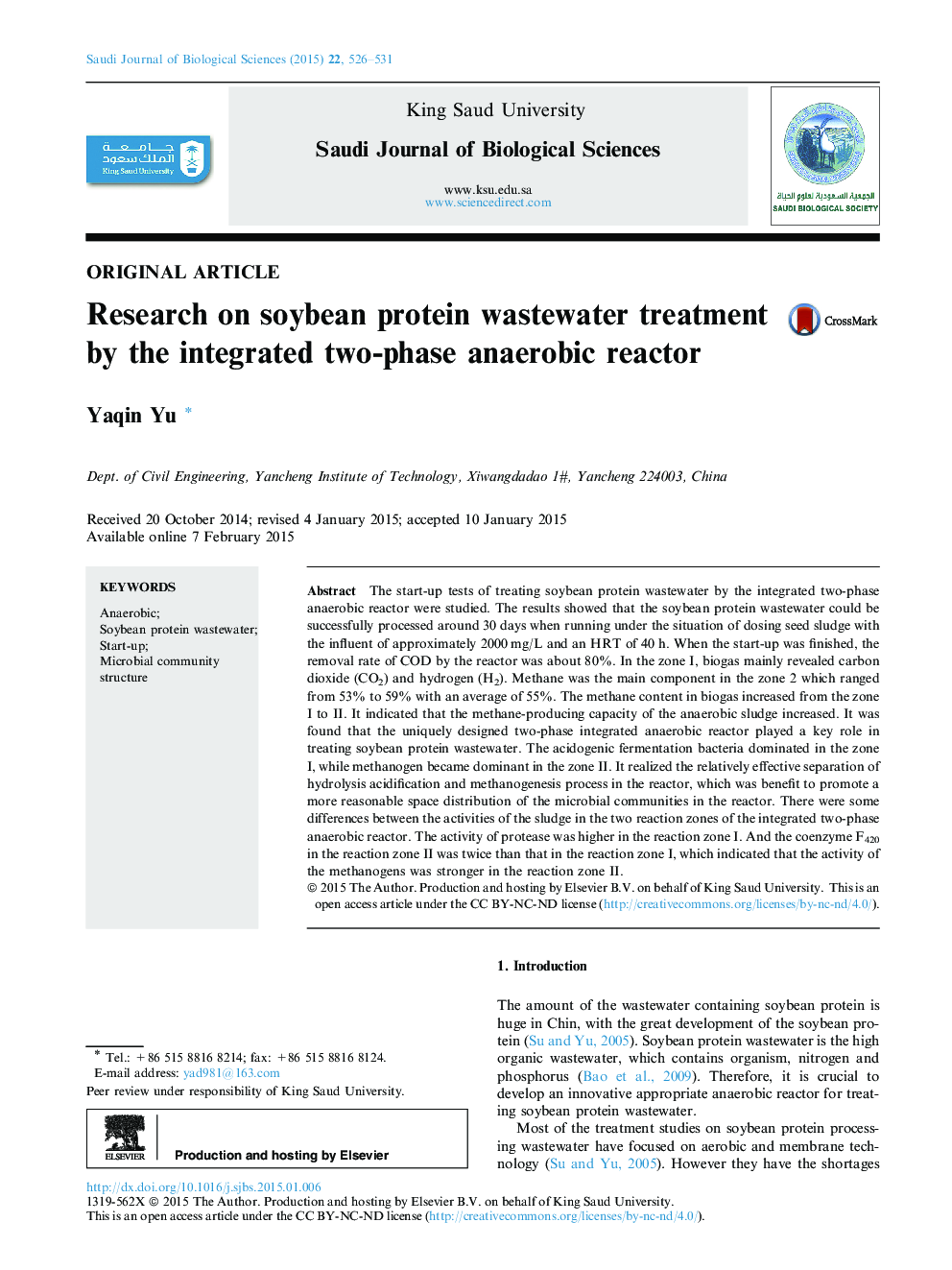| Article ID | Journal | Published Year | Pages | File Type |
|---|---|---|---|---|
| 4406324 | Saudi Journal of Biological Sciences | 2015 | 6 Pages |
The start-up tests of treating soybean protein wastewater by the integrated two-phase anaerobic reactor were studied. The results showed that the soybean protein wastewater could be successfully processed around 30 days when running under the situation of dosing seed sludge with the influent of approximately 2000 mg/L and an HRT of 40 h. When the start-up was finished, the removal rate of COD by the reactor was about 80%. In the zone I, biogas mainly revealed carbon dioxide (CO2) and hydrogen (H2). Methane was the main component in the zone 2 which ranged from 53% to 59% with an average of 55%. The methane content in biogas increased from the zone I to II. It indicated that the methane-producing capacity of the anaerobic sludge increased. It was found that the uniquely designed two-phase integrated anaerobic reactor played a key role in treating soybean protein wastewater. The acidogenic fermentation bacteria dominated in the zone I, while methanogen became dominant in the zone II. It realized the relatively effective separation of hydrolysis acidification and methanogenesis process in the reactor, which was benefit to promote a more reasonable space distribution of the microbial communities in the reactor. There were some differences between the activities of the sludge in the two reaction zones of the integrated two-phase anaerobic reactor. The activity of protease was higher in the reaction zone I. And the coenzyme F420 in the reaction zone II was twice than that in the reaction zone I, which indicated that the activity of the methanogens was stronger in the reaction zone II.
